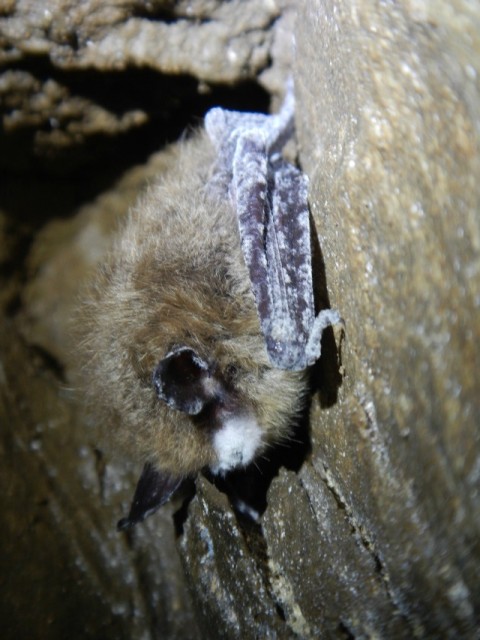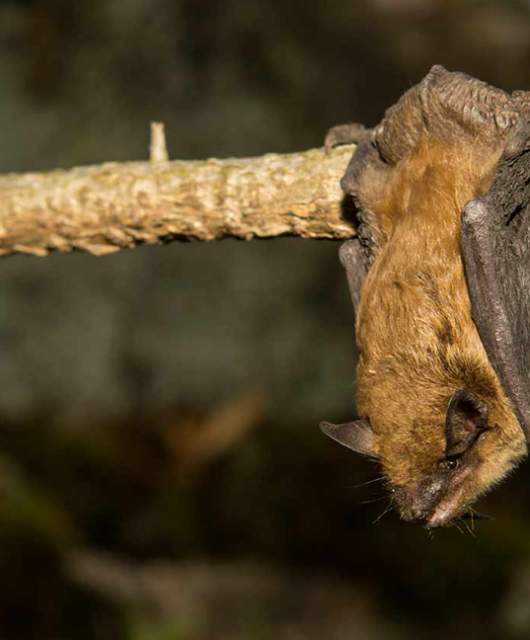We have completed our winter field work for the year and only saw 79 live bats! That is a big drop from the 7000+ we saw 2 years ago. In particular, New Brunswick’s biggest bat hibernaculum did not have a single living bat in it. Two years ago there was a major bat mortality event in this cave and numerous bat skeletons can still be seen on the floor. It was a very depressing sight. Indeed, three of the 10 caves we surveyed had no bats left. One cave had one bat left (see picture); another had 2 bats.
[PHOTO: KAREN VANDERWOLF/ND MUSEUM] – (Photo shows wing bones of numerous bats on the cave floor. An upside-down bat skull can be seen on the right)
[PHOTO: KAREN VANDERWOLF/NB MUSEUM] – (Photo shows the last remaining bat in one New Brunswick cave. Clearly it is heavily infected with white-nose syndrome.)
At this time of year there is still ice in the caves. The caves do not reach their warmest temperatures until June or July since they are insulated to some degree from outside temperatures. This can make walking in the caves quite difficult!
[PHOTO: KAREN VANDERWOLF/NB MUSEUM] – (Photo shows ice stalagmites on the floor of a cave)
[PHOTO: KAREN VANDERWOLF/NB MUSEUM] – (Photo shows myself and Donald McAlpine after crawling around in a muddy cave!)
I gave a talk on White-nose syndrome in the Maritimes earlier this month at the Atlantic Society of Fish and Wildlife Biologists. This is a bi-annual get-together to learn about current environmental issues. WNS is now a fairly well known issue but there is always new information to impart.






1 comment
That is sooooo sad!